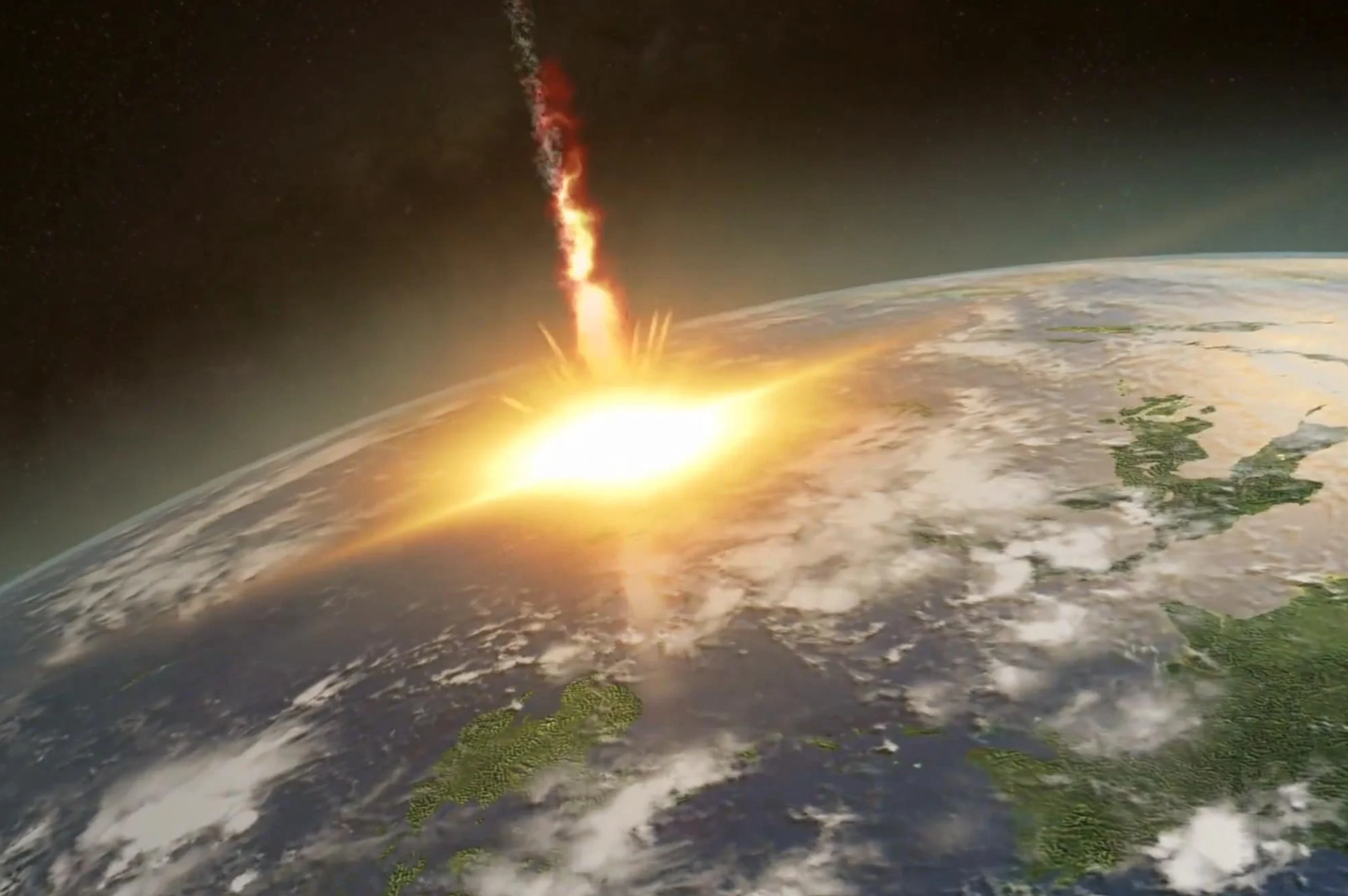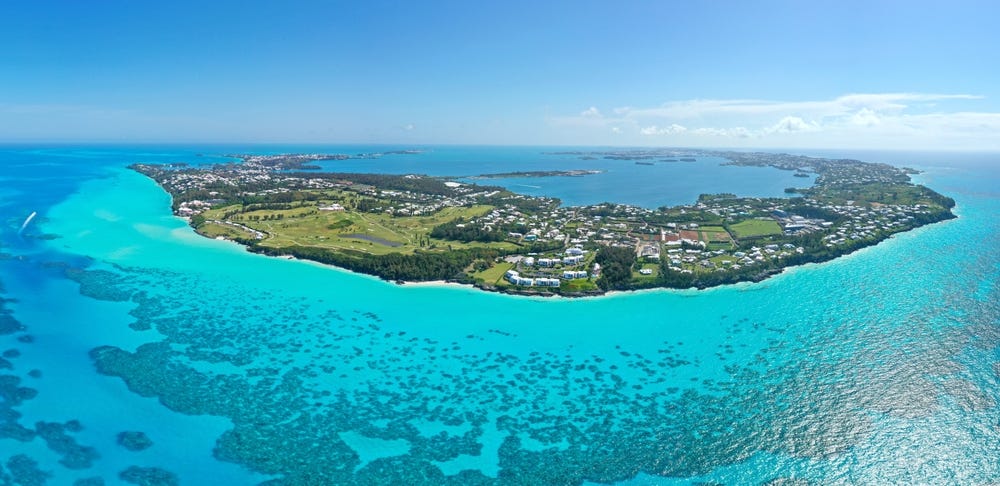Cosmic Airbursts: The hidden impacts that shape Earth’s history
Scientists uncover global evidence of destructive cosmic airbursts, from Arctic seas to ancient cities, revealing their climate-changing power.

New research connects deep-sea dust, ancient ruins, and historic blasts to a hidden cosmic threat: airbursts that can change Earth’s climate. (CREDIT: CC BY-SA 4.0)
Some cosmic impacts are loud, fiery, and leave unmistakable craters. Others are quieter in geological terms, yet no less destructive. These “touchdown airbursts” occur when a comet or asteroid explodes just above the surface, sending searing heat and shockwaves outward. The blast can flatten forests, shatter ancient cities, and alter climate patterns—without leaving the giant scars that mark events like the asteroid strike that ended the age of dinosaurs.
Earth scientist James Kennett of UC Santa Barbara has spent decades studying these lesser-known impacts. In four recent papers, he and collaborators present new evidence showing these high-energy explosions may be more common, and more dangerous, than previously thought. The findings link events across thousands of years and vast distances—from deep-sea sediments in the Arctic to the ruins of an ancient city in the Middle East.
Kennett explains that touchdown airbursts “can cause extreme damage through very high temperatures and pressures” without forming the classic deep craters people associate with cosmic strikes. Instead, they leave behind subtler signs: rare elements and minerals from space, molten glass formed from Earth materials at extreme heat, and shocked quartz grains fractured by forces no volcano or earthquake can match.
A cosmic fingerprint in Arctic waters
One of the team’s most striking discoveries lies far beneath Baffin Bay, off Greenland’s western coast. In the journal PLOS One, they report the first-ever marine evidence for the Younger Dryas Impact Hypothesis. This theory suggests that about 12,800 years ago, fragments of a giant comet exploded over parts of the Northern Hemisphere, triggering an abrupt global cooling called the Younger Dryas.
The explosions likely caused wildfires on a continental scale, wiping out many large animal species and disrupting early human cultures. On land, scientists have found a thin “black mat” layer rich in carbon, platinum, iridium, and other extraterrestrial markers. Now, Kennett’s team has identified the same impact proxies—microspherules, shocked quartz, and fused minerals—preserved in ocean sediments as deep as 2,000 meters.
The particles include iron- and silica-rich spheres mostly of terrestrial origin but containing traces of cometary dust. Using advanced tools like scanning electron microscopy and laser ablation mass spectrometry, the researchers detected platinum-group elements, nickel, and cobalt at concentrations far above normal background levels. These materials were thrown high into the atmosphere during the blasts, then scattered around the world before settling into both land and sea layers.
Related Stories
- Meteor strike may have sparked an explosion of life in the early Earth
- This is the safest place to hide when a nuclear bomb strikes
Kennett says the marine discovery proves the event’s reach was truly global. It also strengthens the link between the cosmic explosions and major climate shifts, including the possible disruption of ocean circulation that plunged the planet into a millennium of colder temperatures.
A hidden crater in Louisiana?
Finding physical craters from such events is rare. The most famous impacts—like Chicxulub in Mexico—are identified by their vast depressions in the landscape. Airbursts, in contrast, often leave nothing but scattered debris.
That’s why a shallow seasonal lake near Perkins, Louisiana, has caught the attention of Kennett’s team. First suspected in 1938 to be an impact crater because of its circular shape and raised rim, it sat unstudied for decades. Since 2006, researchers have drilled sediment cores from the lakebed and surrounding land. They found meltglass, spherules, and shocked quartz, all dated to about 12,800 years ago.
While more research is needed to confirm its origin, this site could be the first known crater linked to the Younger Dryas event. If so, it would give rare direct evidence of a touchdown airburst leaving a small but lasting imprint.
Revisiting Tunguska and Tall el-Hammam
The 1908 Tunguska event in Siberia remains the only documented historical touchdown airburst. Eyewitnesses described a fireball tearing across the sky before a shockwave leveled 80 million trees across more than 2,000 square kilometers. Yet, for all its fame, little work had been done to search for microscopic impact evidence.
Kennett’s team has now found it. Their analysis revealed shocked quartz grains, some containing meltglass, along with metallic spherules and fused carbon. These materials confirm the immense heat and pressure generated by the blast. Small depressions in the landscape—now swamps and lakes—may be remnants of localized impacts from falling debris.
In the ancient city of Tall el-Hammam in the southern Jordan Valley, the researchers found similar evidence. Around 3,600 years ago, an airburst likely destroyed the city with a force comparable to Tunguska. Sediments contain spherules, meltglass, rare minerals, and shocked quartz with fracture patterns ranging from parallel cracks to curved and web-like fissures. These patterns suggest varying shock directions and pressures during the explosion.
The similarities between Tunguska and Tall el-Hammam reinforce the idea that airbursts can occur anywhere—and may have struck more often than history records.
The comet connection
The Younger Dryas event is thought to be linked to the breakup of a massive comet during the last 35,000 years. Pieces from this comet formed the Taurid Complex, which includes Comet Encke and dozens of other large objects. As Earth passed through the debris stream, multiple fragments likely entered the atmosphere, producing low-altitude explosions and scattering cometary dust worldwide.
Metallic dust particles—rich in iron, nickel, chromium, and cobalt—are common in sediment layers from such times. Many have unique shapes: flattened flakes, twisted spirals, and needle-like strands formed when cometary material partially melted while racing through the atmosphere. These structures differ from volcanic rock or oceanic crust, supporting an extraterrestrial origin.
Impact-related microspherules also form when rock vaporized by intense heat condenses into tiny glassy spheres. These particles, called microtektites or microkrystites depending on their composition, often show dendritic surface patterns from crystallization. The team found them in the Baffin Bay cores and at many Younger Dryas sites on six continents.
A pattern of destruction
Taken together, Kennett’s findings suggest that touchdown airbursts may be far more common than the rare, crater-making asteroid strikes often portrayed in disaster movies. While these events release less energy than dinosaur-killing impacts, they can cause widespread damage across continents.
“They’re far more common, but also possess much more destructive potential than the more localized, classic crater-forming asteroidal impacts,” Kennett says. “The destruction from touchdown events can be much more widespread. And yet they haven’t been very well studied, so these should be of interest to humanity.”
By combining physical evidence from deep-sea cores, possible craters, and historic and archaeological sites, the new research strengthens the case for airbursts as major drivers of past environmental and cultural change. The work also warns of a future threat—one that could arrive without much warning, leaving little more than a thin layer of glassy dust and fractured quartz to tell the tale.
Note: The article above provided above by The Brighter Side of News.
Like these kind of feel good stories? Get The Brighter Side of News' newsletter.



